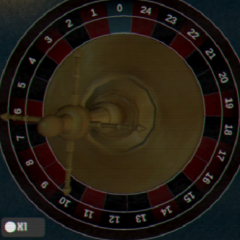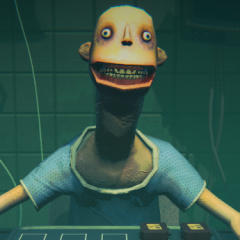Bloodmoney! 2
Bloodmoney! 2 continues the concept of earning money through increasingly disturbing choices. The player again encounters a strange character offering cash in return for simple clicks, but this time the environment has changed. Instead of a street corner, the setup takes place in an isolated room with cameras, hinting that everything might be monitored. The new mechanic revolves around tools that can be unlocked as the player progresses. At first, the game seems harmless, but very quickly it begins pushing ethical boundaries.
Bloodmoney! 2 continues the concept of earning money through increasingly disturbing choices. The player again encounters a strange character offering cash in return for simple clicks, but this time the environment has changed. Instead of a street corner, the setup takes place in an isolated room with cameras, hinting that everything might be monitored. The new mechanic revolves around tools that can be unlocked as the player progresses. At first, the game seems harmless, but very quickly it begins pushing ethical boundaries.
Tools and Consequences
Players begin with basic clicking, but soon face decisions that lead to more profitable outcomes at a personal cost. Each upgrade allows more intense interaction with the character behind the stand, and as the tools become more advanced, so do the reactions. Bloodmoney! 2 adds more variables than the original, including the risk of failure or unintended outcomes depending on player timing or item choice. Money accumulates faster, but so do consequences.
Key items the player may use include:
· A plastic spoon
· A wire cutter
· A hot iron
· A tranquilizer
· A syringe labeled “memory reset”
· A locked briefcase with unknown contents
Multiple Directions
Unlike the first game, Bloodmoney! 2 includes branching paths that affect the ending and the tone of the entire session. Some paths involve trying to help the character instead of harming them, though even that choice can lead to complications. Other directions reward maximum efficiency regardless of the toll. The player is given freedom, but the result is always tied to their level of detachment.
Design and Detachment
The visual style remains minimalistic, but the interface introduces several new elements. Notifications from unseen observers, subtle visual glitches, and delayed reactions from the character add layers of uncertainty. While the mechanics are still based on clicking and purchasing upgrades, the presence of surveillance and silence from the developers about the “rules” creates tension. The game doesn’t explain what’s right or wrong—it leaves that to the player.
Final Choice
Bloodmoney! 2 offers no explicit judgment, but it tracks every action. At the end, the player receives a profile summary with hidden stats like hesitation time, click rhythm, and item preference. This summary is used to generate the final outcome, of which there are several—some open-ended, others decisive. In one scenario, the player is offered the same position as the character they just exploited. In another, the room resets and the game begins again with new restrictions. Nothing is clearly explained, but everything feels intentional.














Comments